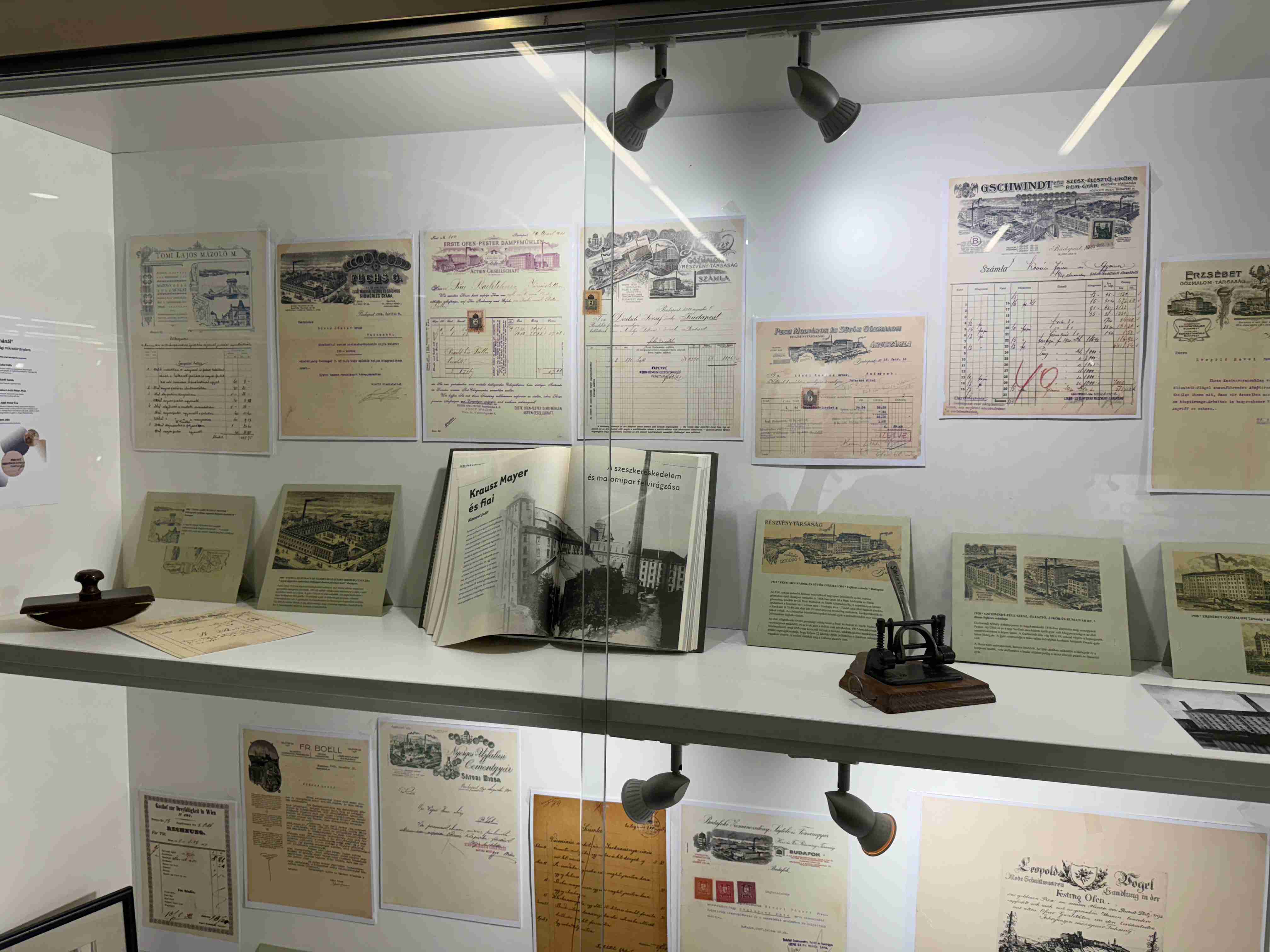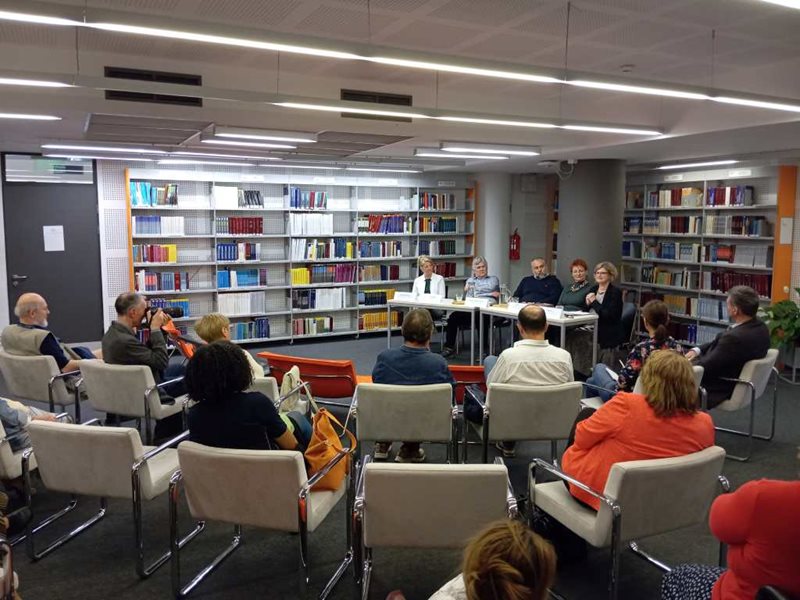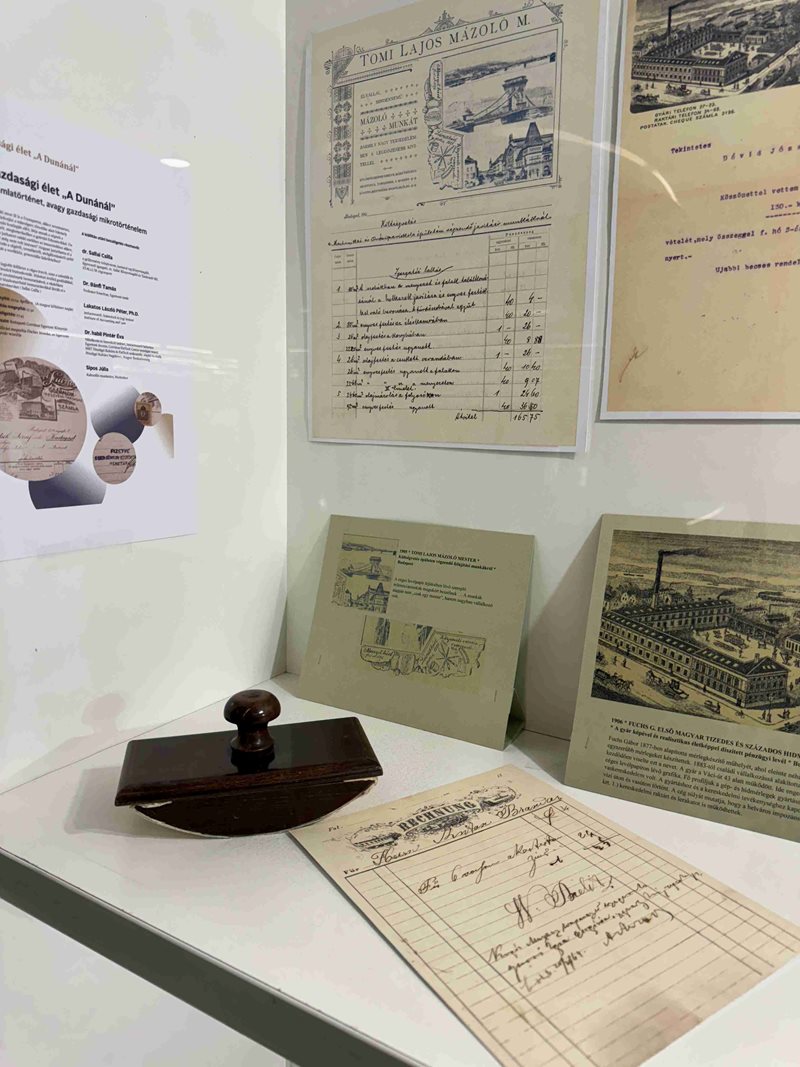Economic life “By the Danube”

The exhibition also tries to connect the Danube and history with the people of today, as Attila József did: “The Danube, past, present and future, is embraced by its soft waves. It is natural that one can reach the website of any company on one’s phone in a split second, see its products and learn about its production processes. But how did someone get all this information before the internet? How could a business get its message about its company, its products and services to its customers and clients?
The best platform for this was provided by company documents, i.e. invoices and business letters. They were decorated with artwork of artistic merit, presentations of achievements and confidence-building presentations encouraging purchases. These documents provide a wealth of information about the period in question, as they are now considered historical documents.

Economic history – we often come across the predecessors of businesses that are still in business today, which were founded in the 19th century. Urban history – the headings of letters and invoices often depict the factories, factories and streetscapes of the period. Cultural history – the infinitely precise prints often show the artistic trends of the time, such as Art Nouveau. Micro-history – it tells us about the consumption habits of the time, the price/value ratios and many other interesting facts.

The owner of the collection is Dr Csilla Sallai, a former student of our university, who, after many years of collecting, now has economic documents from a number of companies. A selection of this private collection of 4,000 items is the subject of this thematic exhibition, which can be viewed at the entrance to the university library. The exhibition shows how important the Danube, on whose banks Corvinus University of Budapest stands, has played in the life of businesses. Mills played a very important role in the economy at the turn of the century. The Danube was a resource and a major transport route for them. The Danube and the buildings on its banks, such as the Buda Castle, were an important landmark and prestige-building tool.
The opening of the exhibition was followed by a round table discussion in which our university lecturers stressed the importance of preserving the values of the past, which, using the digital possibilities of our present, also provides the basis for a constructive future.
